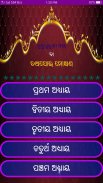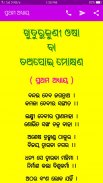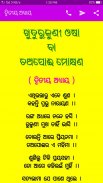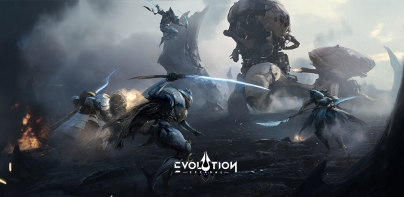









Khudurukuni Osha

Descripción de Khudurukuni Osha
On the Sundays of the month of Bhadrab (Aug-Sept) this festival is observed by the
unmarried girls of the business community of the coastal districts of Orissa. During the
festival Goddess Durga is propitiated Khude Bhaja (Left out particles of rice that are
fried), Kantiali Kakudi (Cucumber having little thorns on it), Lia (fried paddy),
Ukhuda(fried paddy sweetened by molasses) and coconut are the food-offerings given
to the deity. However, the principal food-offering is Khuda which is said to be the
favourite of the Goddess. Therefore, the festival is named as "Khudarankuni" or popularly
'Khudurkuni' which means one who is very eager for khuda.
In the early morning the girls go out collecting flowers required for the ritual. The varieties
are Kaniara, Godibana, Tagara, Malati, Champa, Mandera and Kain. Then they go
to nearby rivers and tanks to have purificatory bath. After this they build tiny temples of
earth or sand and decorate the same with flowers. Paying obeisence to the deity there,
they return to their respective homes. They take two and half mouthfuls of boiled rice
mixed with water without adding salt. Then salt is added. The significance of this act is
not known. After this the, whole day is spent in making garlands and decorating the
image of the Goddess.
In villages generally the deity is worshipped in the Dhinkisala or the place where caddy
is pounced. This place is plastered neatly with cow-dung and the image of the deity is
installed. The floor is painted with floral despins known as Jhoti or Alpana. Garlands
are made to hang like arches. The whole day passes with the arrangement and the rituals
of worship commence in the evening.
After the ritual, are over the girls recite musically the episode of Taapoi which is now
available in print. Eariler this was handed down by oral tradition. The first episode
'Malasri' recounts the killing of the demon by Durga. It is said, that Mahisasura, the terrible
demon became atrocious by getting a boon from Brahma, the creator. Not only
the mankind, but also the Gods got panicky. He became so powerful that even Gods
couldn't kill him. Then all the Gods conferred and went to request the Goddess of
power to kill the demon. Durga agreed and assuming the form of a beautiful damsel
went to Vindhya mountain to pretend penancing. Mahisasura, while out on hunting,
noticed the beautiful damsel and immediately offered to marry her. The damsel
answered that she would only marry that person who would defeat her in duel. Mahisasura
being confident of his power soon agreed to the proposal. A fierce 'duel' ensued
between them; with all her enargy the damsel thrusted a trident violently to the chest of
the demon who was killed. Thus, Durga redeemed the world from the fear and atrocity
of the demon. It is, therefore, believed that the girls worship Durga to be powerful like
Her, to fight evil forces for the goodof the human race.
Los domingos del mes de Bhadrab (agosto-septiembre) este festival es observado por el
muchachas solteras de la comunidad empresarial de los distritos costeros de Orissa. Durante el
festival Diosa Durga es propiciado Khude Bhaja (Quedan fuera las partículas de arroz que son
frito), Kantiali Kakudi (pepino con pequeñas espinas), Lia (arroz frito),
Ukhuda (arroz frito endulzado con melaza) y coco son los alimentos ofrecidos
a la deidad Sin embargo, la principal oferta de alimentos es Khuda, que se dice que es el
favorito de la diosa. Por lo tanto, el festival se llama "Khudarankuni" o popularmente
'Khudurkuni', que significa alguien que está muy ansioso por Khuda.
Temprano en la mañana, las chicas salen a recoger las flores necesarias para el ritual. Las variedades
son Kaniara, Godibana, Tagara, Malati, Champa, Mandera y Kain. Luego se van
a ríos y tanques cercanos para tener un baño purificador. Después de esto, construyen pequeños templos de
tierra o arena y decorar lo mismo con flores. Prestando obediencia a la deidad allí,
regresan a sus respectivos hogares. Toman dos y media bocados de arroz hervido
mezclado con agua sin agregar sal. Luego se agrega sal. El significado de este acto es
no conocida. Después de esto, se dedica todo el día a hacer guirnaldas y decorar el
Imagen de la Diosa.
En las aldeas en general, la deidad es adorada en el Dhinkisala o el lugar donde el caddie
se abalanza. Este lugar está cubierto de estiércol de vaca y la imagen de la deidad es
instalado El piso está pintado con despines florales conocidos como Jhoti o Alpana. Guirnaldas
están hechos para colgar como arcos. Todo el día pasa con el arreglo y los rituales.
de culto comienzan en la noche.
Después del ritual, las chicas recitan musicalmente el episodio de Taapoi que ahora es
Disponible en impresión. Eariler esto fue transmitido por la tradición oral. El primer episodio
'Malasri' cuenta el asesinato del demonio por Durga. Se dice que Mahisasura, el terrible
demonio se volvió atroz al obtener una bendición de Brahma, el creador. No solo
la humanidad, pero también los dioses se asustaron. Se hizo tan poderoso que incluso los dioses
No podía matarlo. Entonces todos los dioses consultaron y fueron a pedir a la Diosa de
poder para matar al demonio. Durga estuvo de acuerdo y asumió la forma de una hermosa damisela.
Fui a la montaña Vindhya para fingir penancing. Mahisasura, mientras cazaba,
notó a la hermosa damisela e inmediatamente se ofreció a casarse con ella. La damisela
respondió que solo se casaría con esa persona que la derrotaría en duelo. Mahisasura
confiando en su poder pronto aceptó la propuesta. Se produjo un feroz 'duelo'
entre ellos; Con toda su energía, la damisela empujó violentamente un tridente al cofre de
El demonio que fue asesinado. Así, Durga redimió al mundo del miedo y la atrocidad.
del demonio Por lo tanto, se cree que las chicas adoran a Durga para ser poderosa como
Ella, para luchar contra las fuerzas del mal por el bien de la raza humana.


























